The Untamed North - 2016
Iceland
Here are the bare bones of our Iceland adventure.
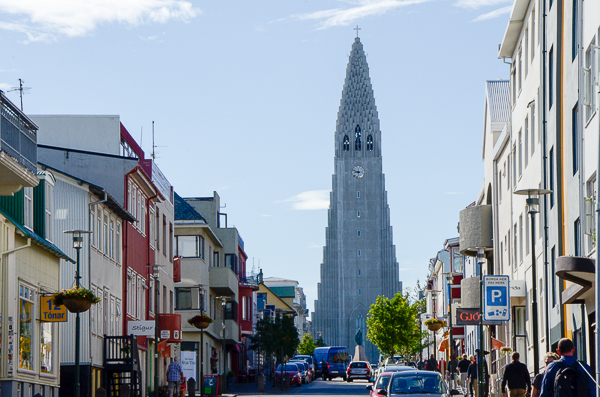
We arrived in Reykjavik the day before the official trip started to provide time for my riding expedition. We deposited our bags with the hotel reception and set out to explore Reykjavik. The downtown area is compact and easy to navigate on foot.
Our goals were (1) to find something for breakfast and (2) to locate the hand-knitting association to check out Icelandic woolens. I had a mind to get a new sweater and had done some research on the best place to buy.
We quickly discovered that there are not many places that are open at 8:30am for a bite to eat, but as we passed a side street we noticed a gathering of folks on the sidewalk. We joined the line to buy some delicious baked goods. Even though breakfast would be included at the hotel for the next two mornings we seriously considered making the trek back for more goodies.
Hallgrímskirkja church dominates the Reykjavik skyline.
After touring it we found the handicraft store and, yes, I found a sweater.
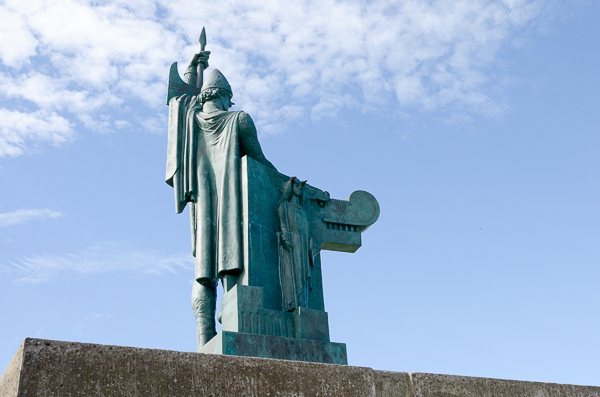
This monumental sculpture overlooking the harbor depicts Ingólfur Arnarson. According to the Book of Settlements, he and his men were the first permanent residents of Iceland starting in the 9th century. They named the location Reykjavik, or Smoky Cove, because of the steam from the many hot springs.
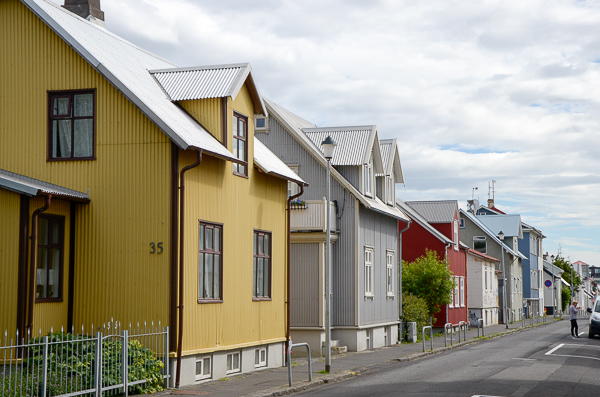
This streetscape illustrates the colorful residences in downtown Reykyavik.
Most houses were sided and roofed with corrugated metal. Wood for building is in short supply in Iceland and masonry construction can be fragile in earthquake country.
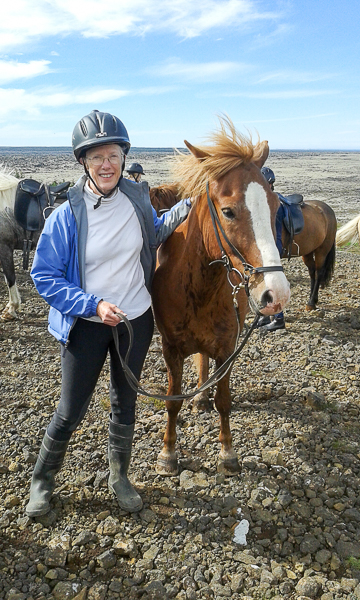
As mentioned earlier a day of riding was mandatory.
The name of the provider that Zegrahm recommended was Ishestar (dunno how to pronounce it) and I selected their all-day "Viking Tour." The name basically means Iceland (IS) horse (hestar). There were numerous animals saddled and ready to go. I didn't get a picture of my morning horse, but I rode this little guy in the afternoon. I couldn't remember his Icelandic name, so I called him "Surfer Dude."
Icelandic horses come in every color. They also come in tobiano patterns, but I didn't see any overo or appaloosa type markings.
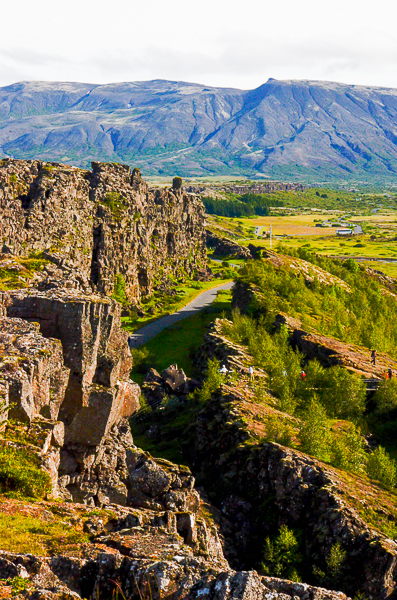
After my horseback excursion, I returned to the hotel to find that most of our fellow travelers had arrived during the day. Jim & I joined them at the welcome happy hour and dinner. We enjoyed meeting our expedition staff and fellow travelers. There was even a couple we knew from a previous trip to northern Russia. We clearly have a common interest in the Arctic! The next morning we packed, took our suitcases down to be picked up & taken to the ship, and loaded onto one of three buses for our "Golden Circle" tour.
Our first stop was Þingvellir (Thingvellir). It is the side of the ancient Icelandic "parliament," which was the first representative government in Europe. It was called the Alþingi (Althing) and was inaugurated in the 10th century. It ruled until the 14th century when Iceland came under the control of Norway. After that time it served as the judiciary until 1798.
This rift valley was perfect for gathering the various clans to review the laws, settle disputes, make decisions, and generally hob-nob. There was ample space for people to congregate, fresh water from the nearby lake, grazing for livestock, and firewood. The high rock walls of the narrow canyon itself provided great acoustics for debates and such.
This fissure was opened by the stretching of the plates that form North America and Europe and it continues to widen and deepen. We are standing on North America at this viewpoint. The mountains in the background are European.
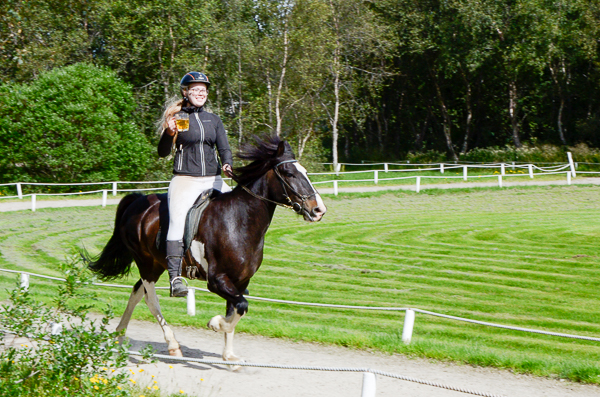
After visiting Þingvellir, I got another horsy fix at Fridheimar where we enjoyed an equestrian demonstration and lunch. Iceland is my kind of place. We were told that there are 300,000 inhabitants and 100,000 horses! The horses have been maintained in isolation for over 1000 years as have the local sheep and cattle. No livestock are allowed to be imported and any animals that leave the country may not return.
The demonstrators carried filled beer mugs as the horses showed off their smooth gaits.
The lunch was in the greenhouse. They produce several tons of tomatoes and other vegetables year-round. Our meals included just about everything that you can imagine with tomatoes -- including tomato jam! Nothing was better than my Cherokee Purples, though.
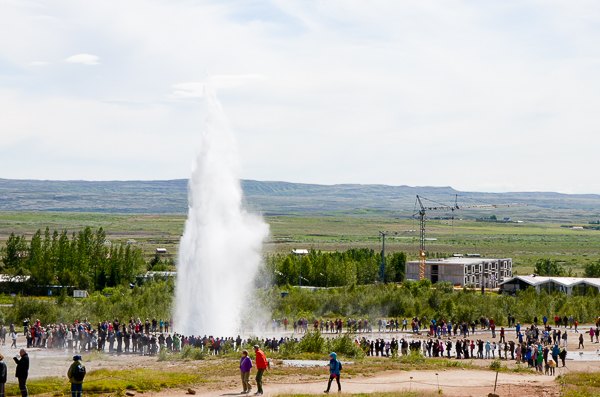
The English word "geyser" comes from the Icelandic word "geysir," which is the name of a specific geyser at the Geysir Geothermal Field. The original Geysir no longer erupts, but its neighbor, Strokkur, is the Icelandic equivalent of Old Faithful. It erupts every 6-8 minutes. The height and duration of the eruption varies. During the time we were at the park, there was one eruption that was just a splash. Another time there were two eruptions very close together.
The park where the geysers are located is owned by the state, but the surrounding land is not. We were told that the landowner once tried to limit access to the geysers and charge admission. The state sued, however, and the ruling was that a private citizen could not limit access to a national treasure.
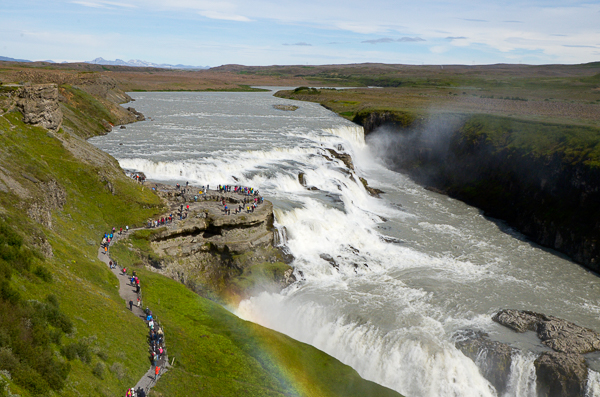
Our next stop was Gullfoss waterfall. This two-stage fall is very popular. It was also at one time privately owned. The owner was persuaded to sign a lease to a power company, which planned to modify the cascade to produce hydro power. The owner's daughter, however, led a fight to protect the waterfall. There was a legal suit that went all the way to the Icelandic Supreme Court, and the daughter lost. Eventually, however, she and her backers were able to discover an irregularity in the payments under the contract terms that allowed them to revoke the agreement. It now produces more revenue from tourism than it would ever have done as a power source.
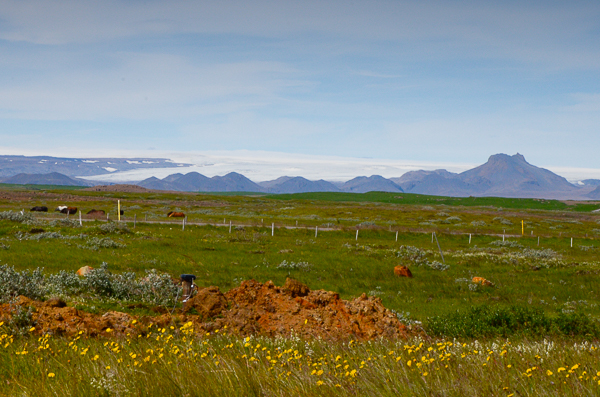
From the waterfall park, it was possible to see Longjökull, the second-largest Iceland glacier. The center of the island is virtually uninhabitable due to the presence of the glaciers and desert conditions, but there are tours to visit the icy highlands.
This was the end of our "Golden Circle" tour. The buses took us back to Reykjavik where we loaded onto the ship and found our bags waiting for us in our staterooms. It was a joy to settle in and unpack!
Our destination for the next two days was the Westfjords region of Iceland.
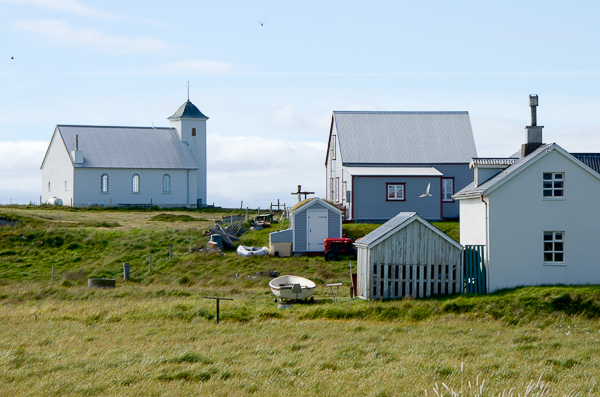
Our morning stop the next day was Flatey Island. This once-thriving community is now mostly a summer tourist destination. Only a couple of families live on the island year-round. As in most countries, the Icelandic population has migrated to the cities where services are nearby and jobs are not as arduous.
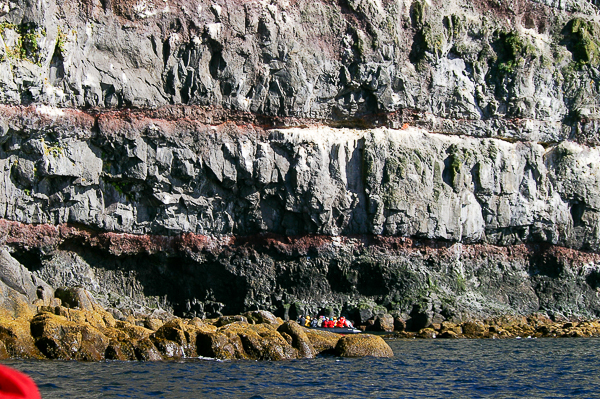
In the afternoon the ship cruised to Látrabjarg, Europe's largest bird cliffs. We loaded into Zodiacs for our up close and personal visit to the birds. These cliffs are home to some 40% of the world population of some species -- millions of birds. We saw harlequin ducks, guillemots, phalaropes, puffins, razorbills, sanderlings, shags, and countless gulls. The cliffs are 14km long and over 400m high in spots.
The ledges were formed by successive volcanic eruptions.
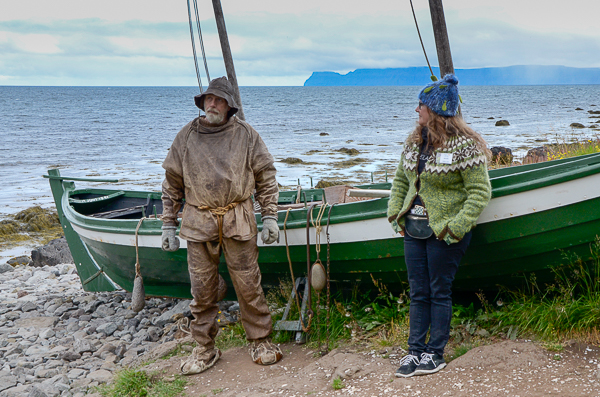
The next morning we toured Ísafjörður and surrounding areas (don't ask me how to pronounce any of these names). The highlight of our visit there was the Ósvör Bolungarvík Maritime Museum. This gentleman modeled the traditional fishing gear. He explained how each of the pieces was made (mostly of animal skins) and how they were used. The cord tied around the waist and crotch not only kept the ensemble together — it was useful if someone was swept overboard! It could provide a handy grip to haul him back in.
An interesting feature of each woolen mitten was two thumbs. When one wore out, the mitten could simply be rotated so the other could be used.
The museum featured this 19th century boat and reconstructions of traditional houses and fish processing techniques.
The young woman was our local guide. She is an American who married an Icelandic man she met while attending college in Montana.
We also visited a nearby ski area!
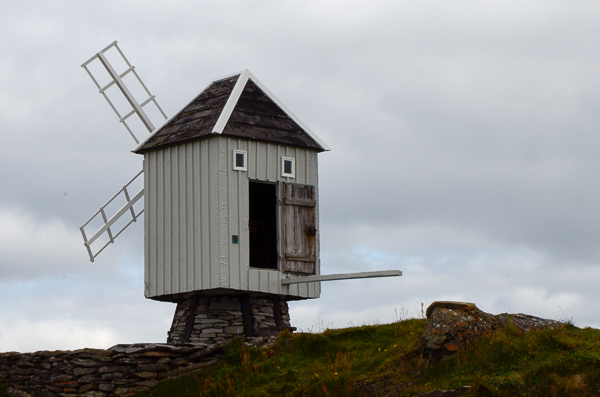
The afternoon saw us on Vigur Island. The island is owned by a single family that once farmed it, but now they are focused on tourism. Puffins and arctic terns nest here. The terns are quite aggressive and we were all issued poles with small flags to hold. The terns attacked the poles rather than our heads! Our guide said that we were lucky because the young birds were about old enough to leave the nest so the terns were much mellower.
There were also harbor seals hanging out nearby.
The family served up delightful tea and snacks after our guided walk around the island.
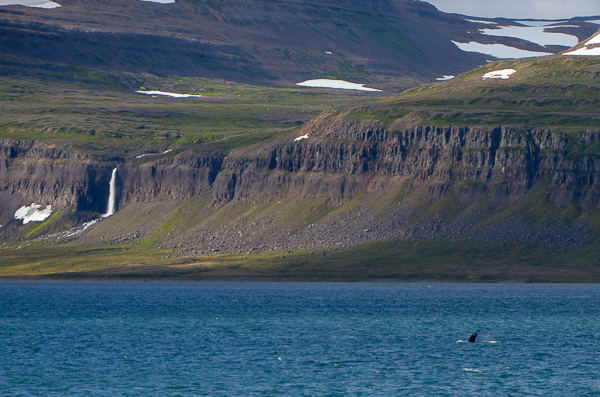
As we left Vigur Island we followed a pod of feeding humpback whales. They didn't get very close, but watching them in the striking surroundings was breathtaking.
This was our last day in Iceland. We were now off to Greenland.
Click your "back" button to return to the previous page or click for our picture album.